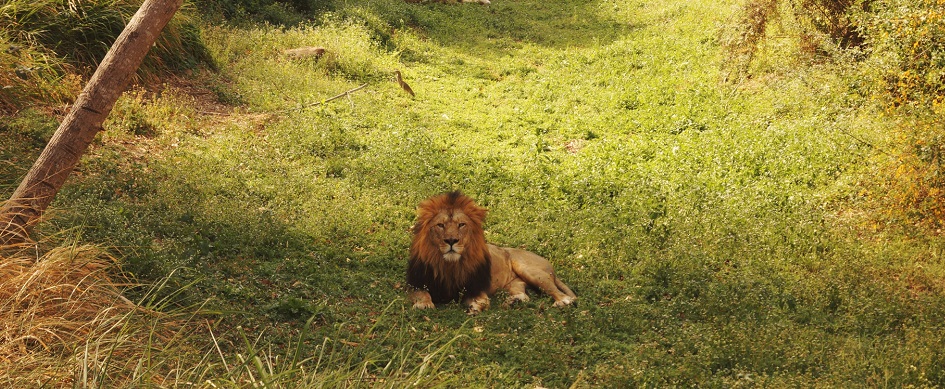Gir National Park Located in the western Indian state of Gujarat, Gir Forest National Park is a haven for wildlife enthusiasts and nature lovers. Home to the majestic Asiatic lion, this sanctuary offers a unique opportunity to witness these regal creatures in their natural habitat. As we embark on a virtual journey through the Gir Forest, we'll explore its captivating landscapes, diverse wildlife, and the significance of its conservation efforts.
The Kingdom of Asiatic Lions:
Gir Forest National Park is world-famous for being the last abode of the Asiatic lion (Panthera leo persica). These lions once roamed across India and the Middle East but were nearly driven to extinction. Thanks to dedicated conservation efforts, Gir is now the primary sanctuary for these remarkable big cats. Witnessing the lions in their natural environment is an awe-inspiring experience, and Gir offers one of the best opportunities to do so.
Diverse Flora and Fauna:
While the lions take center stage, Gir is also home to a rich variety of flora and fauna. The park's landscape ranges from deciduous forests to grasslands and rocky hills, providing diverse habitats for its inhabitants. Among the park's other residents are leopards, hyenas, jackals, and a range of ungulates, including the chital, sambar deer, and chinkara.
Birdwatcher's Paradise:
Gir is not just about the big cats; it's also a paradise for birdwatchers. The park is home to over 300 avian species, making it a delight for ornithologists. Birdwatchers can spot a wide range of birds, including the critically endangered Indian vulture, the crested serpent eagle, and various species of owls and waterfowl.
Crocodiles in Kamleshwar Dam:
The Kamleshwar Dam, located within the sanctuary, is home to a population of marsh crocodiles. A visit to this reservoir offers the opportunity to see these prehistoric reptiles basking in the sun and navigating the waters.
Conservation Efforts:
Gir Forest National Park is not just a sanctuary; it's a symbol of successful conservation. The efforts to protect the Asiatic lion have been commendable. Community involvement, anti-poaching measures, and habitat restoration initiatives have played a crucial role in the recovery of the lion population.
Responsible Tourism:
Visitors to Gir are encouraged to practice responsible tourism. Follow the park's rules and guidelines, maintain a safe distance from the wildlife, and respect the environment. By being a responsible traveler, you can contribute to the ongoing conservation efforts and help protect the sanctuary's fragile ecosystems.
Visiting Gir:
Gir Forest National Park is easily accessible from major cities in Gujarat. The best time to visit is from October to June when the park is open for tourists, as the monsoon season often leads to temporary closure due to heavy rainfall. During the winter months, the weather is pleasant, and wildlife sightings are at their peak.
Conclusion:
It's a place where the wild roars of lions echo through the forests, and nature's beauty reveals itself in all its glory. A visit to Gir is not only a thrilling wildlife experience but also a tribute to the importance of conservation efforts. It's a reminder of our responsibility to protect the planet's biodiversity and ensure that future generations can continue to hear the majestic roar of the Asiatic lion in the wild. Gir is a symbol of hope and a testament to the power of conservation.

